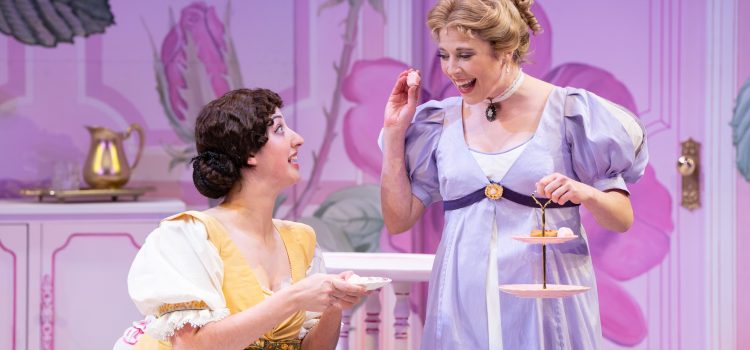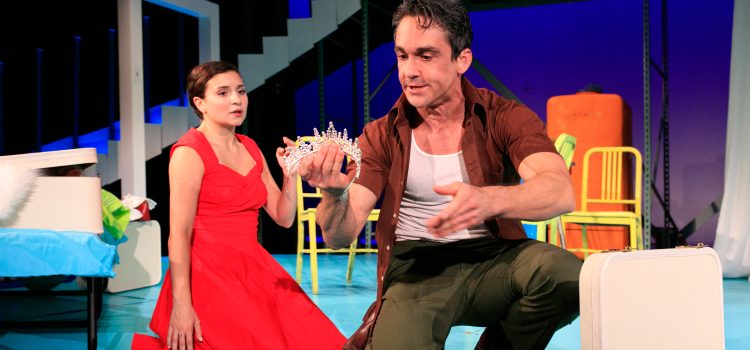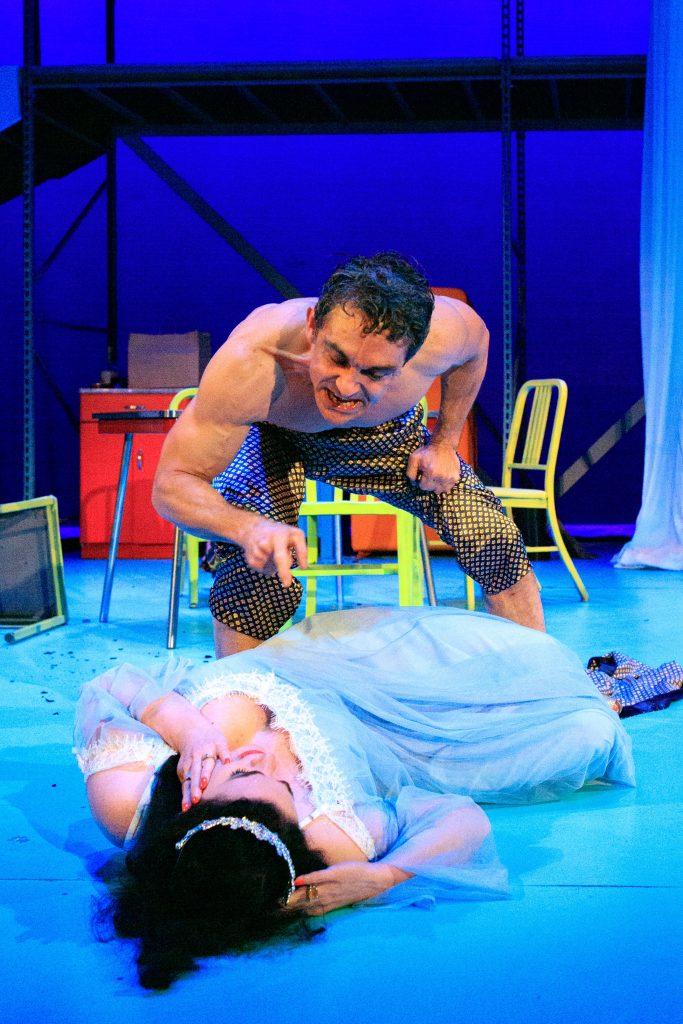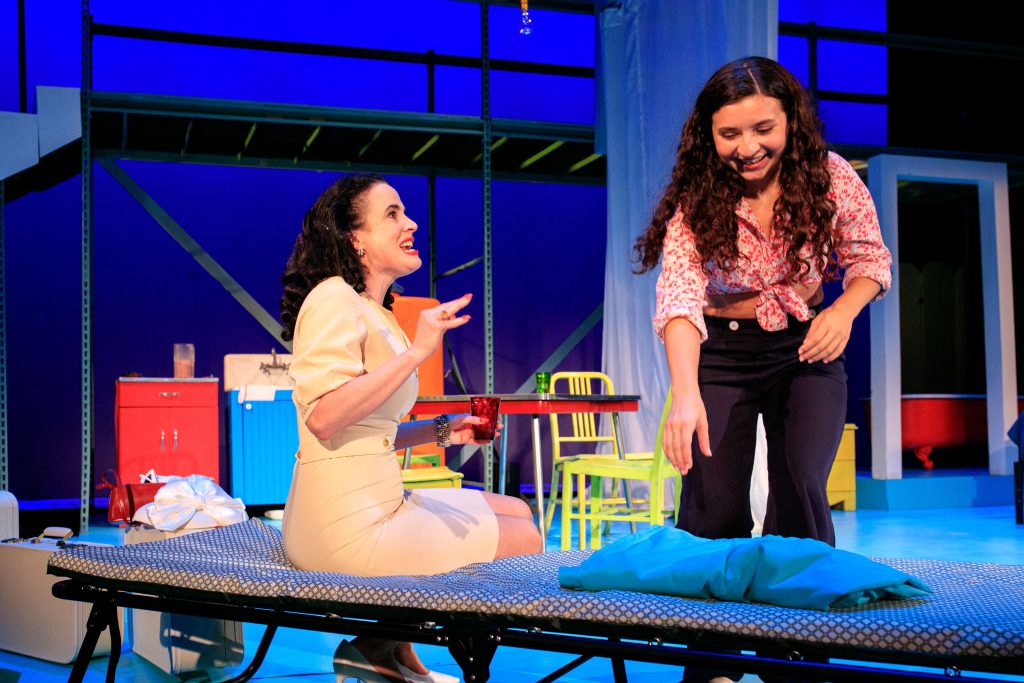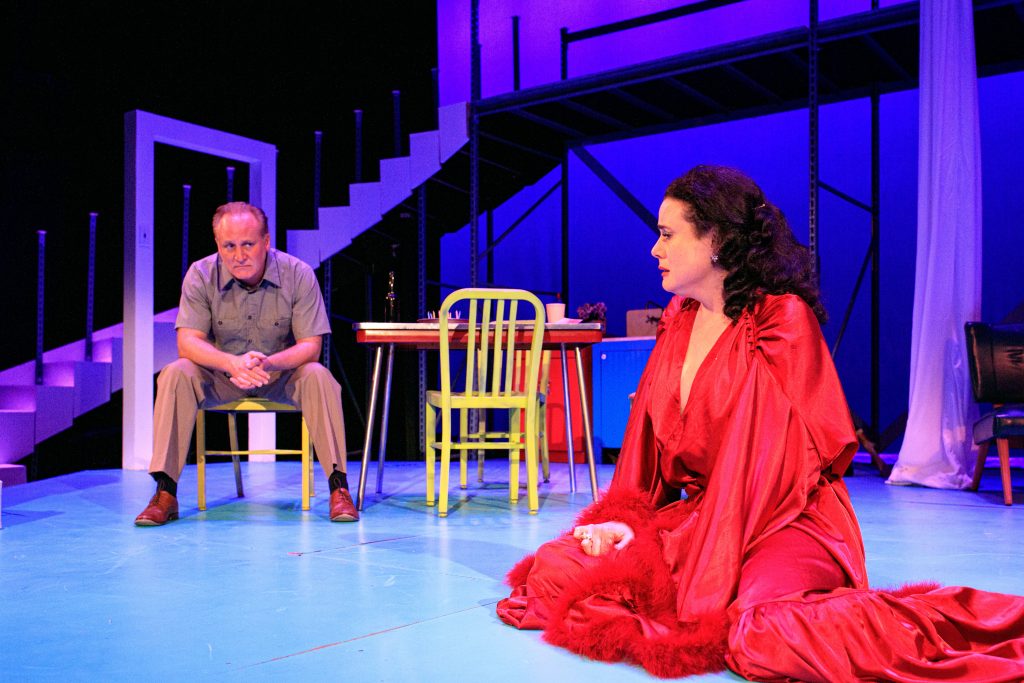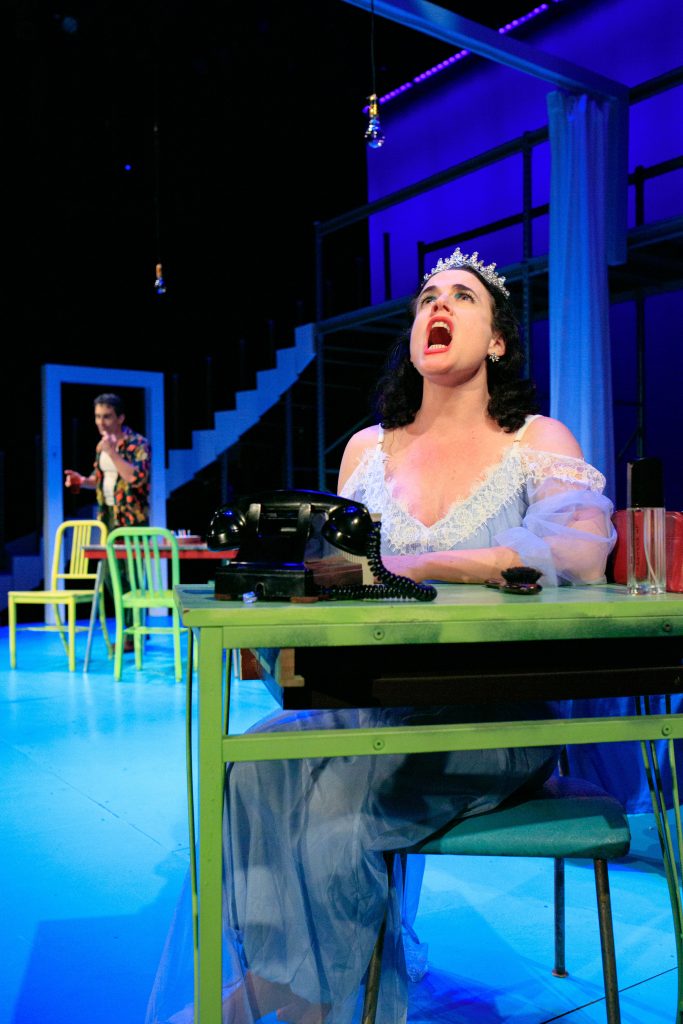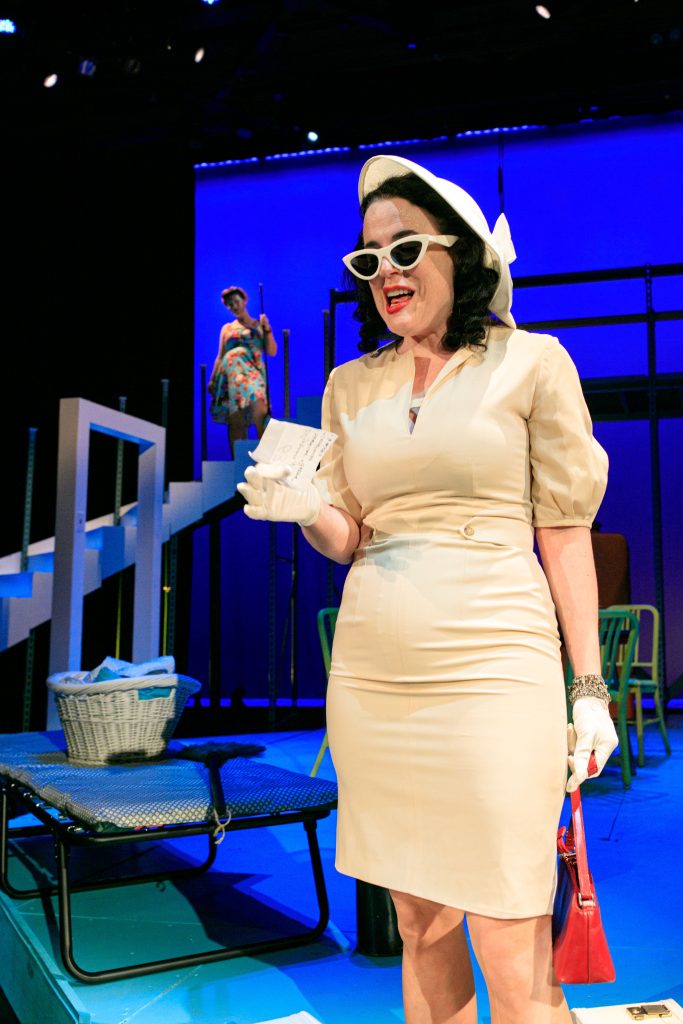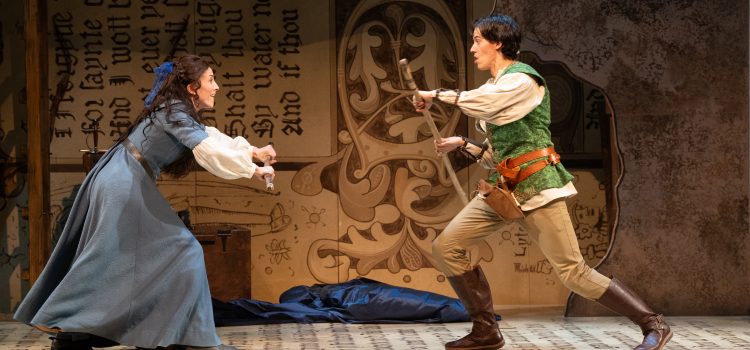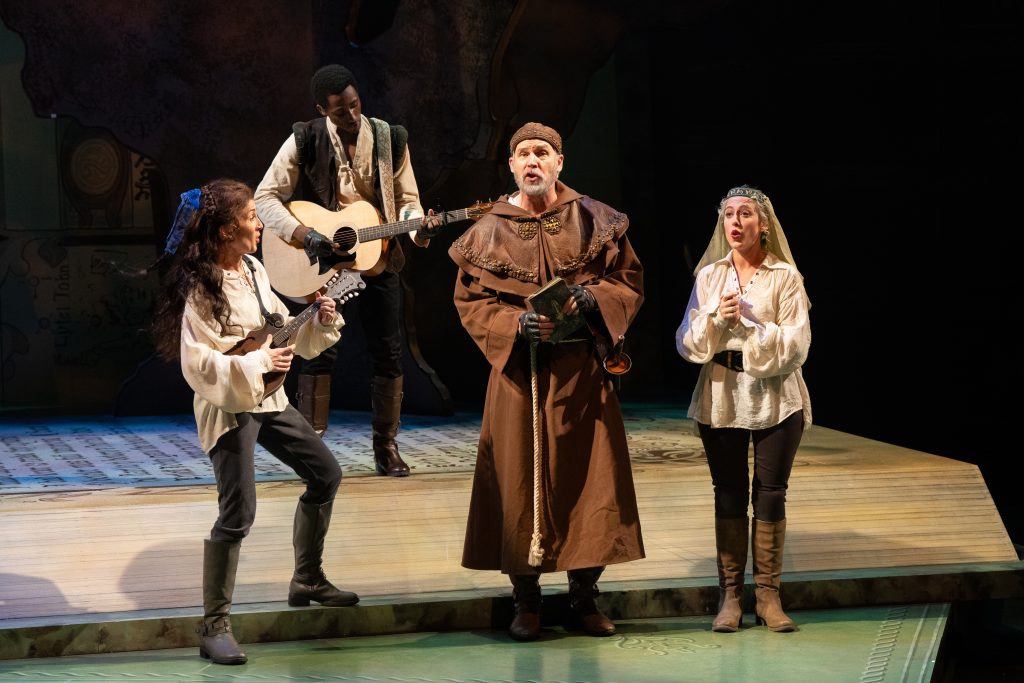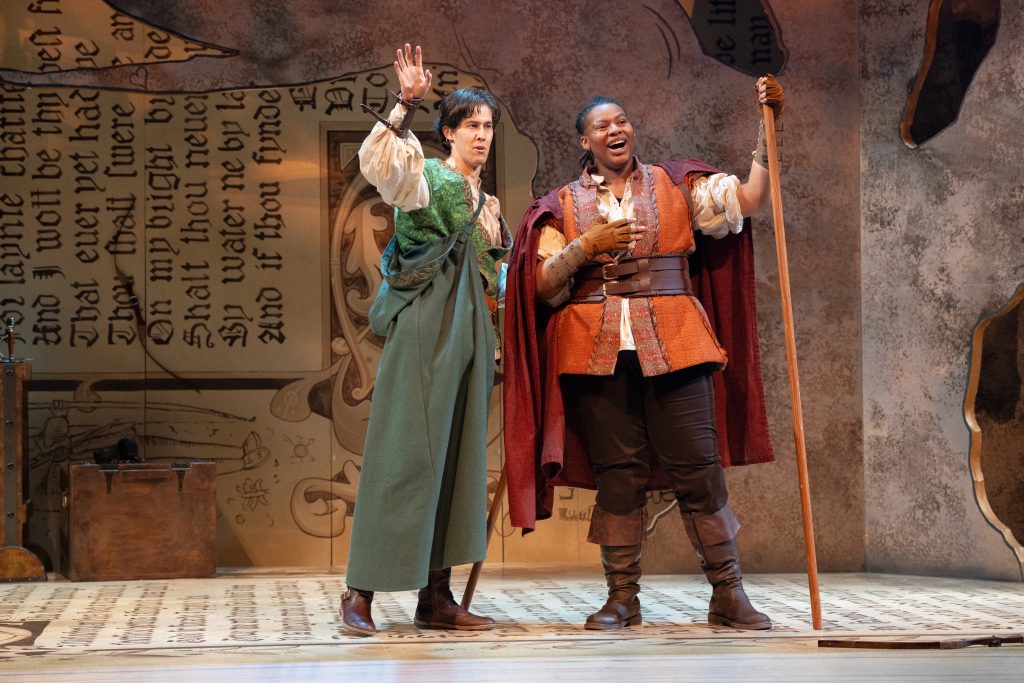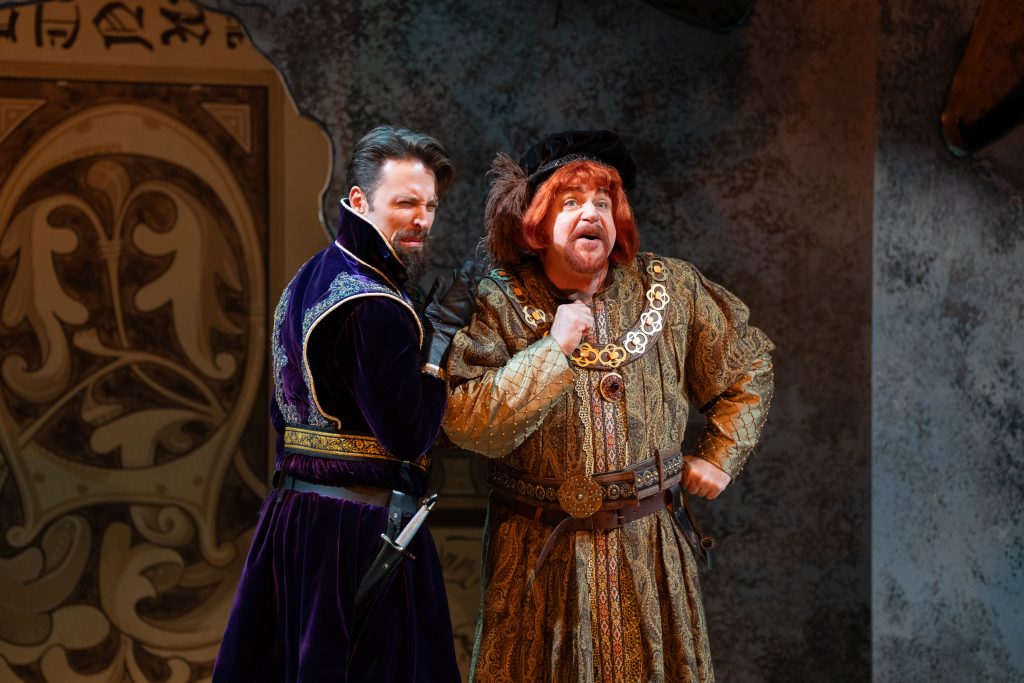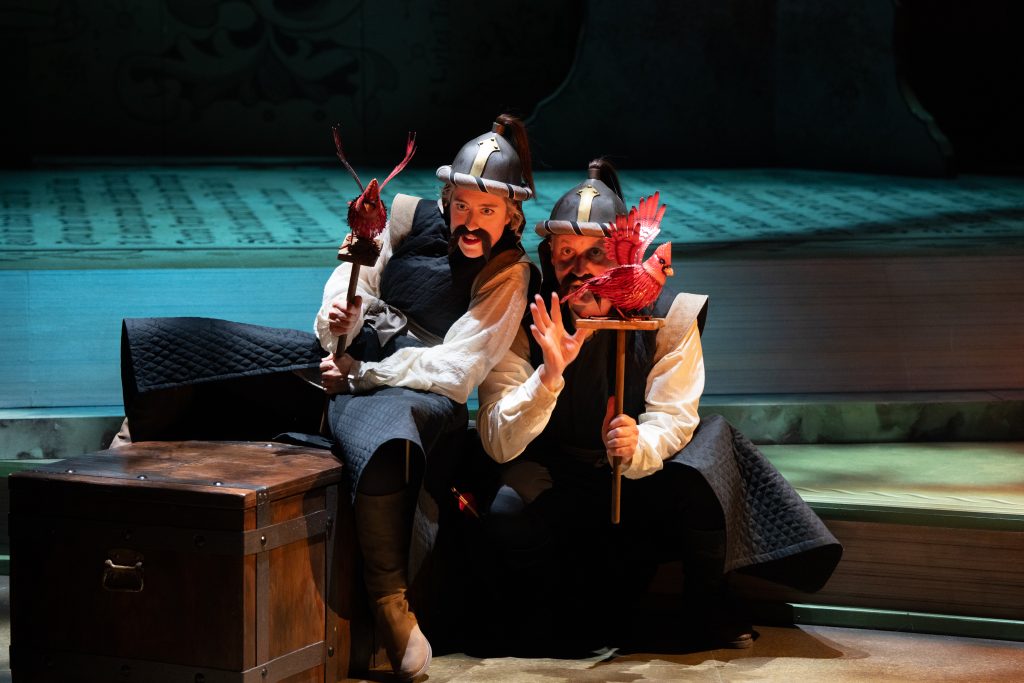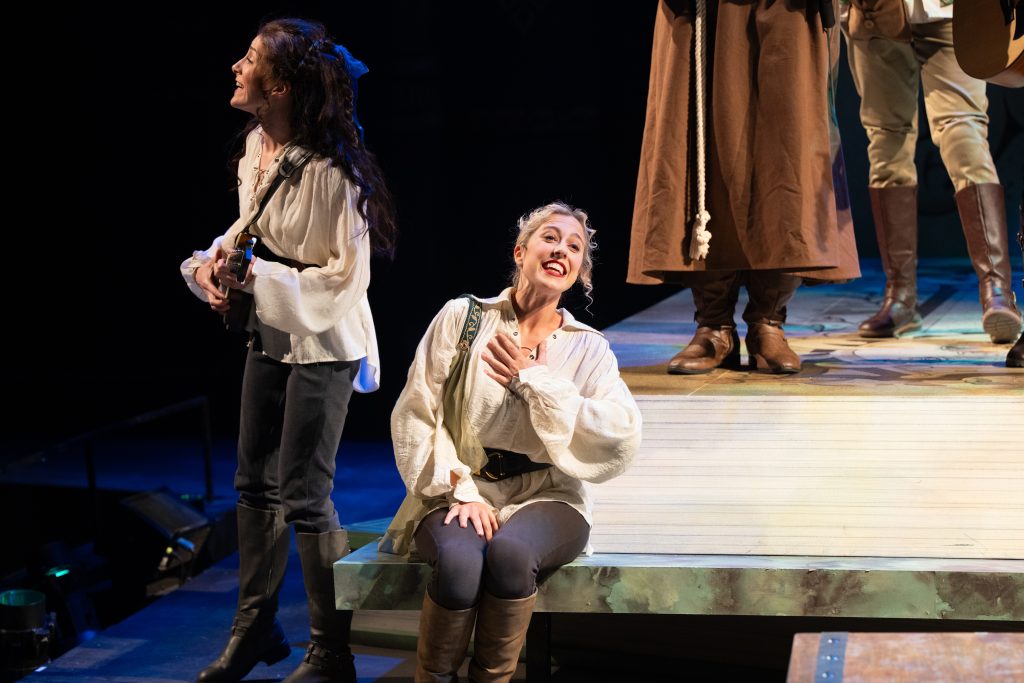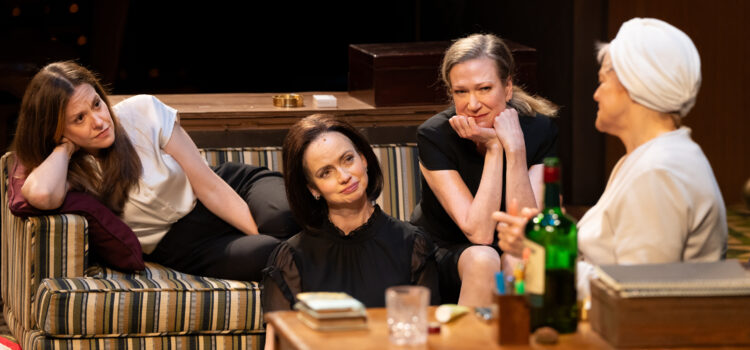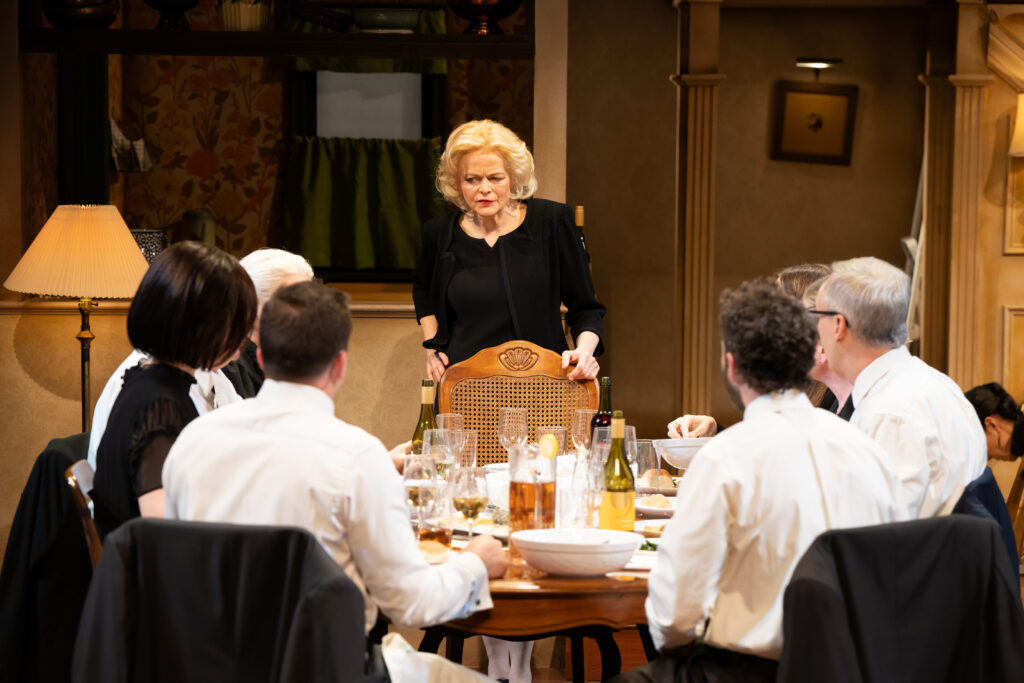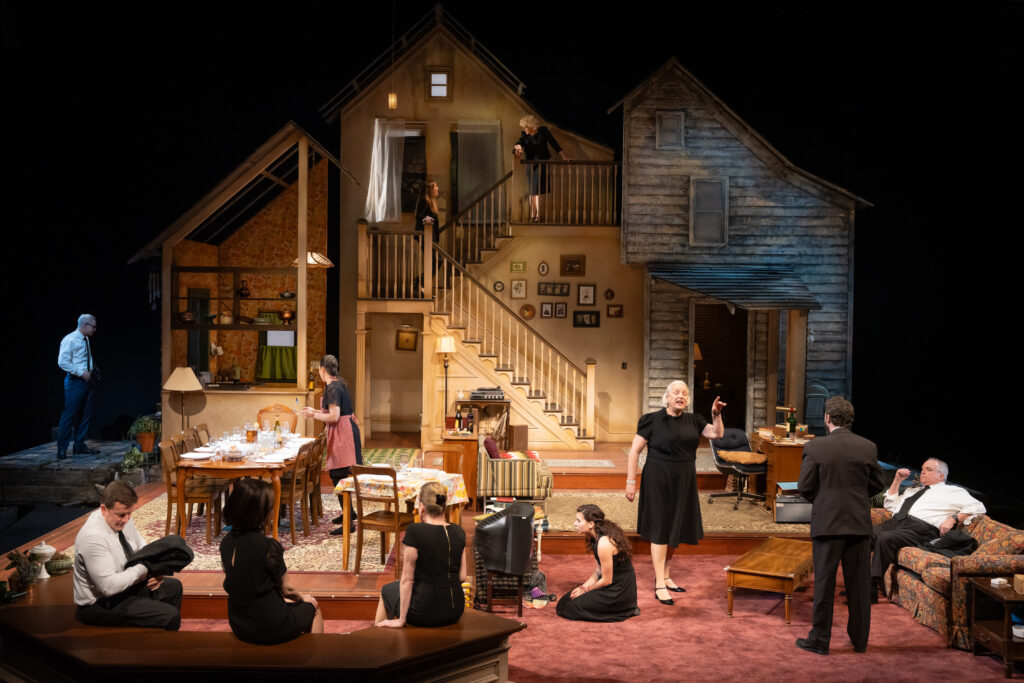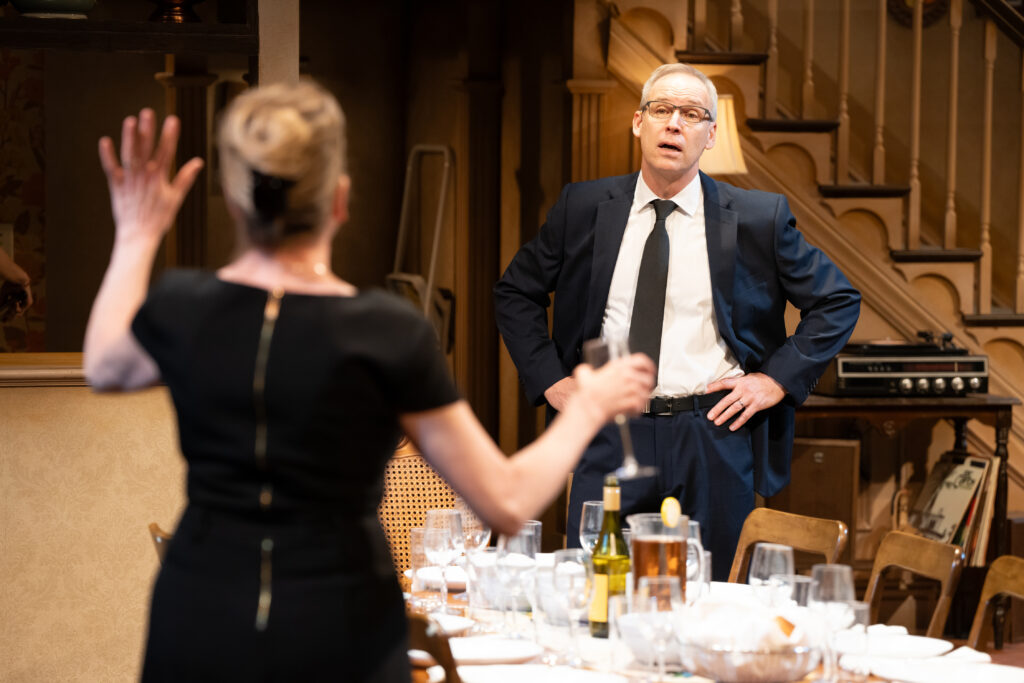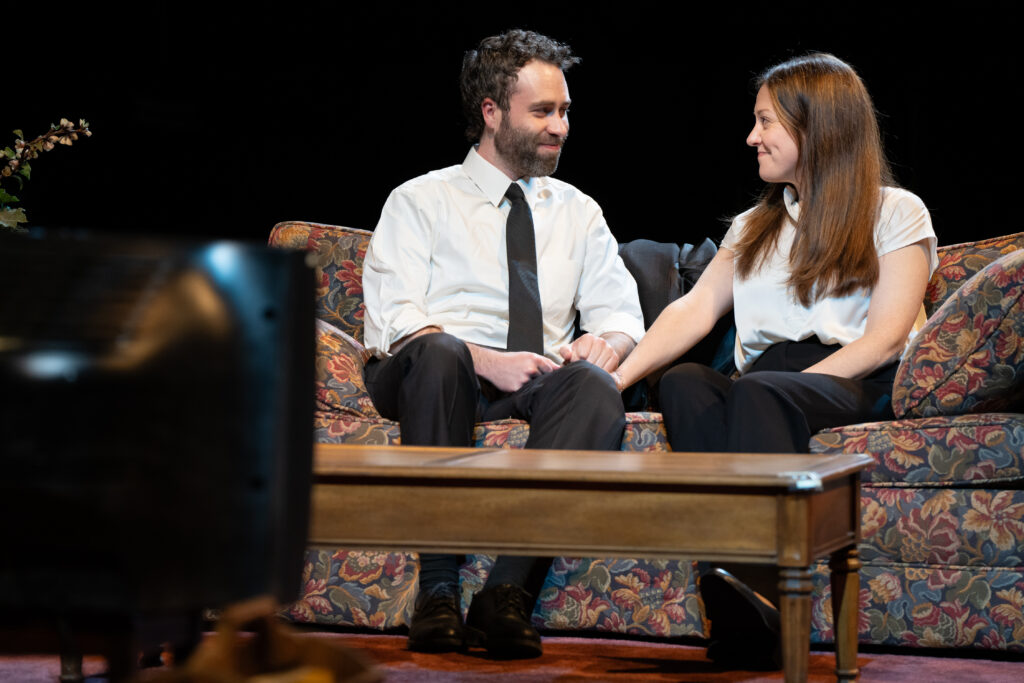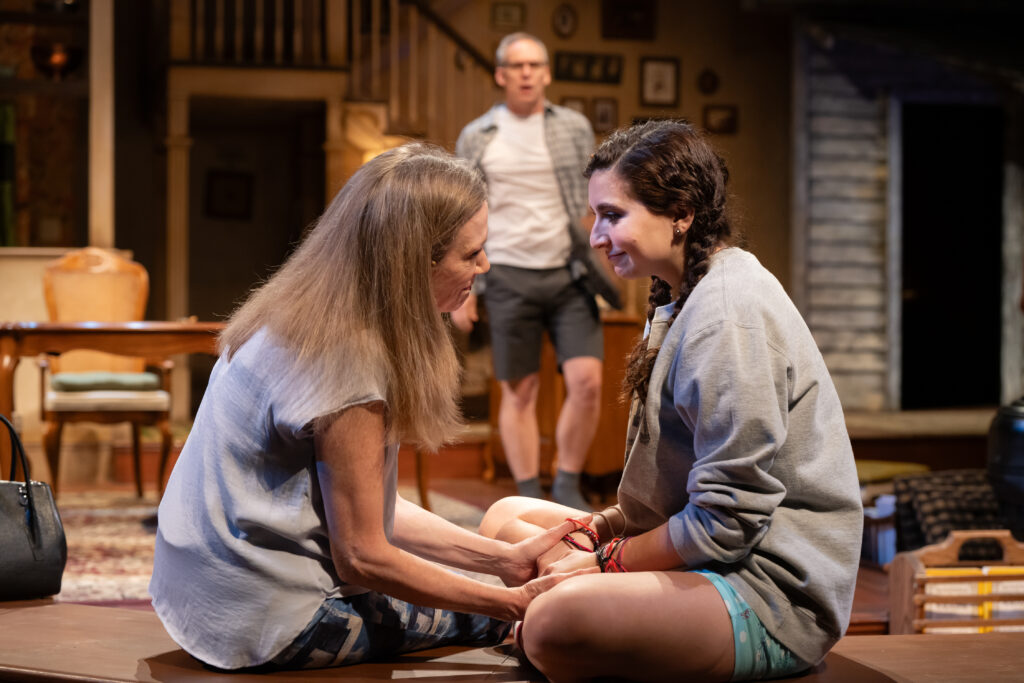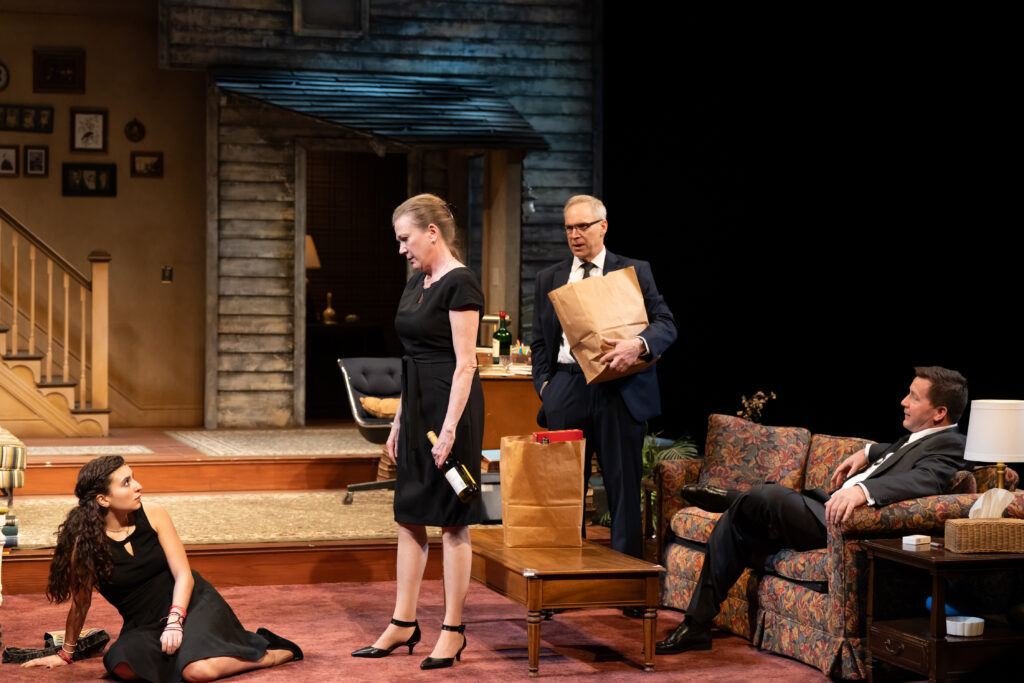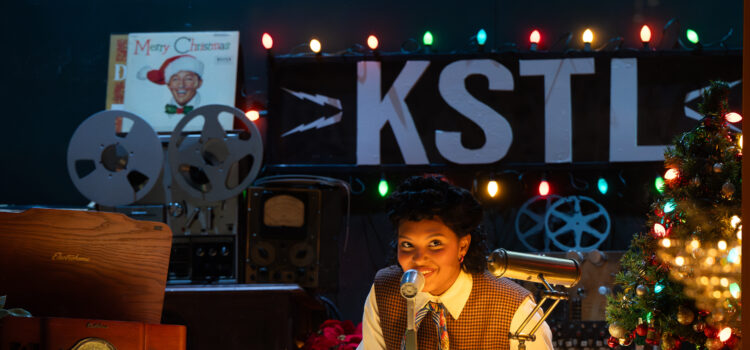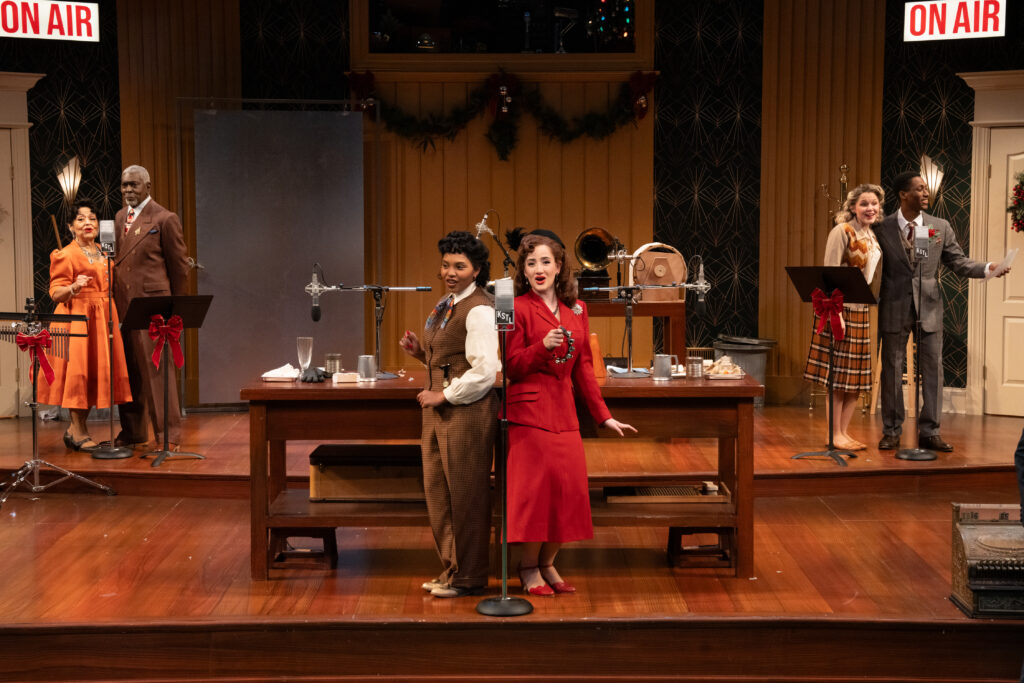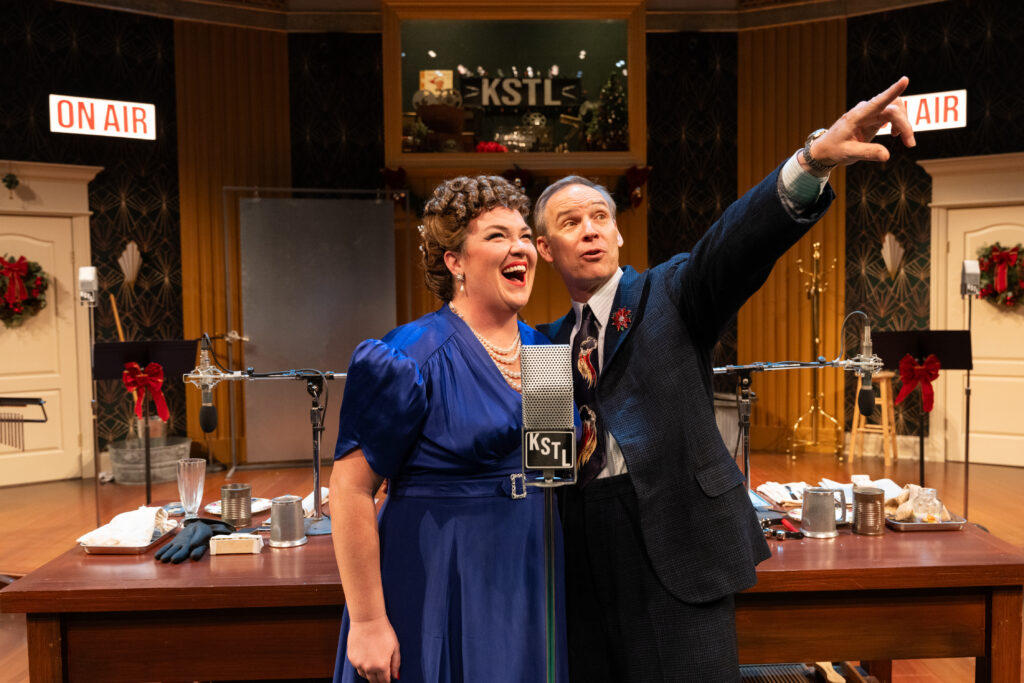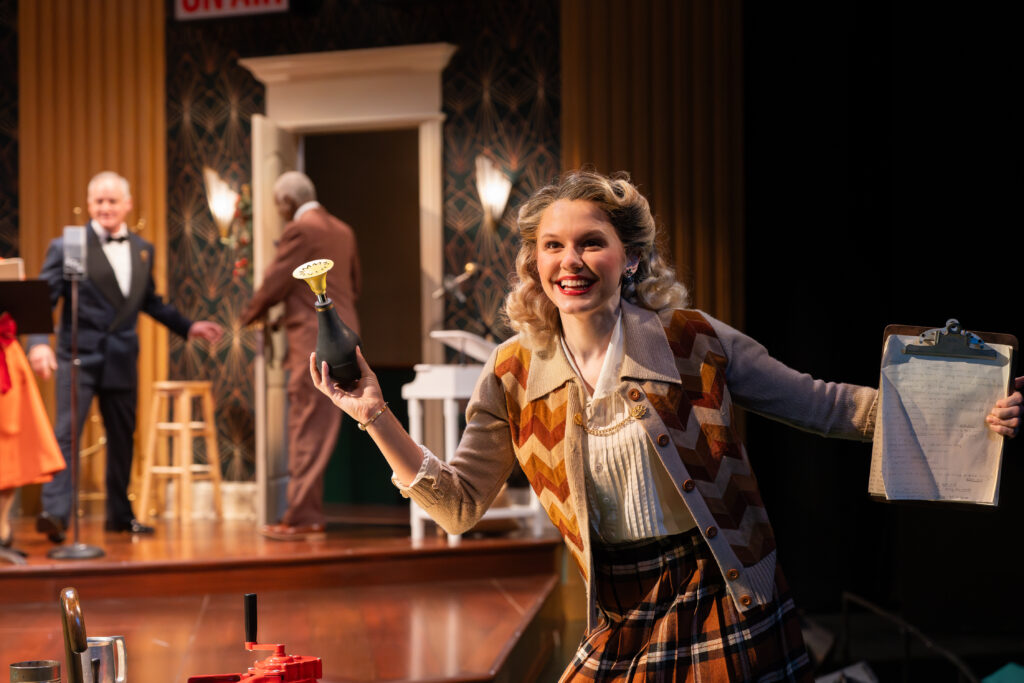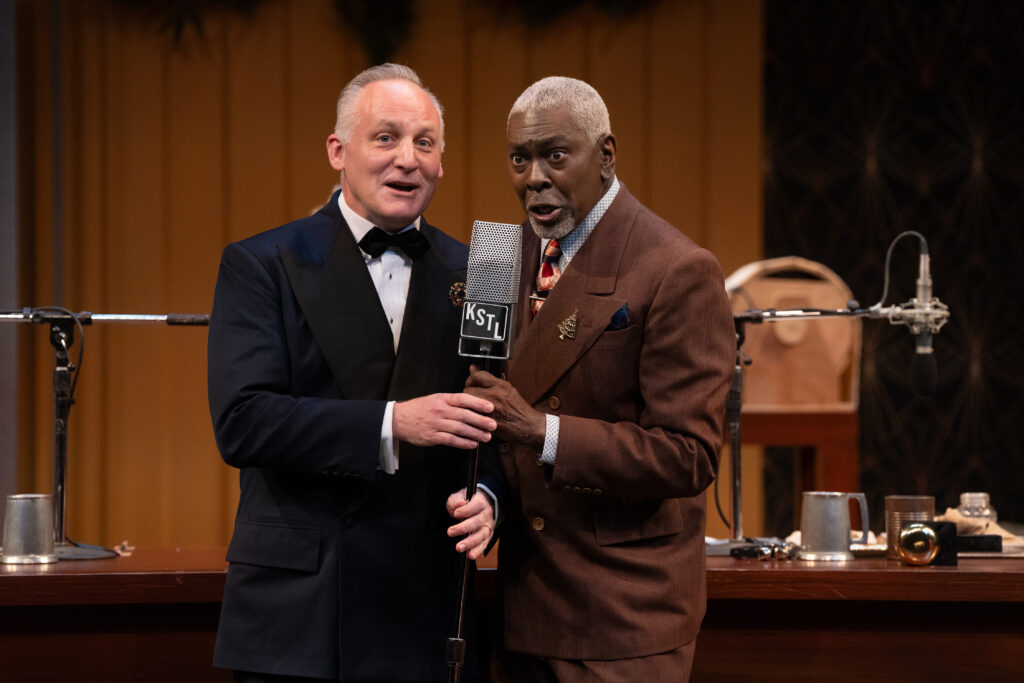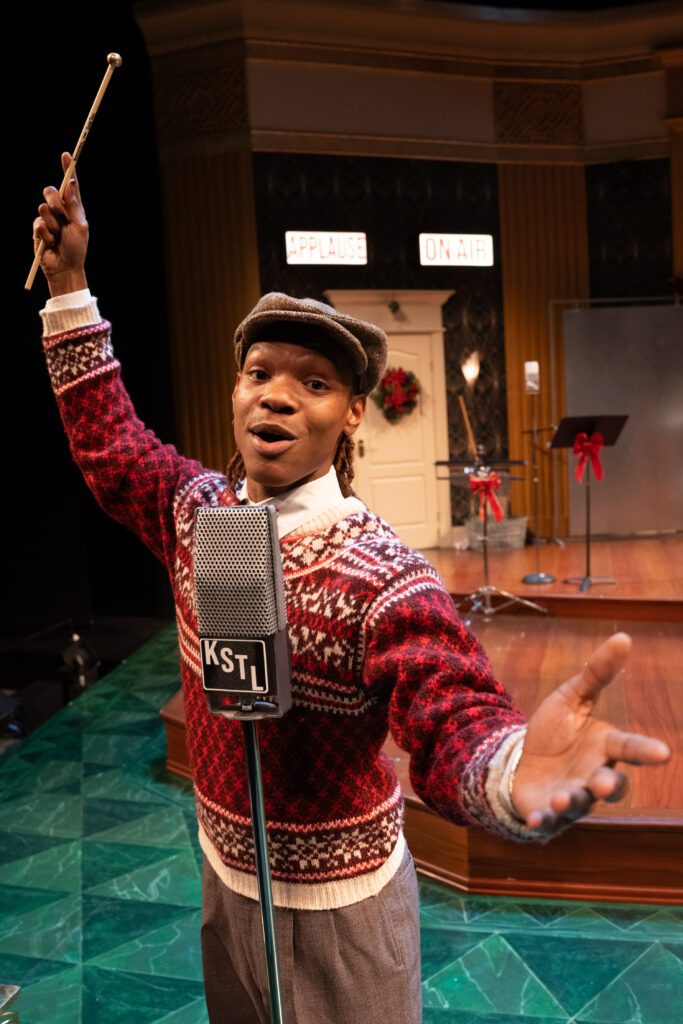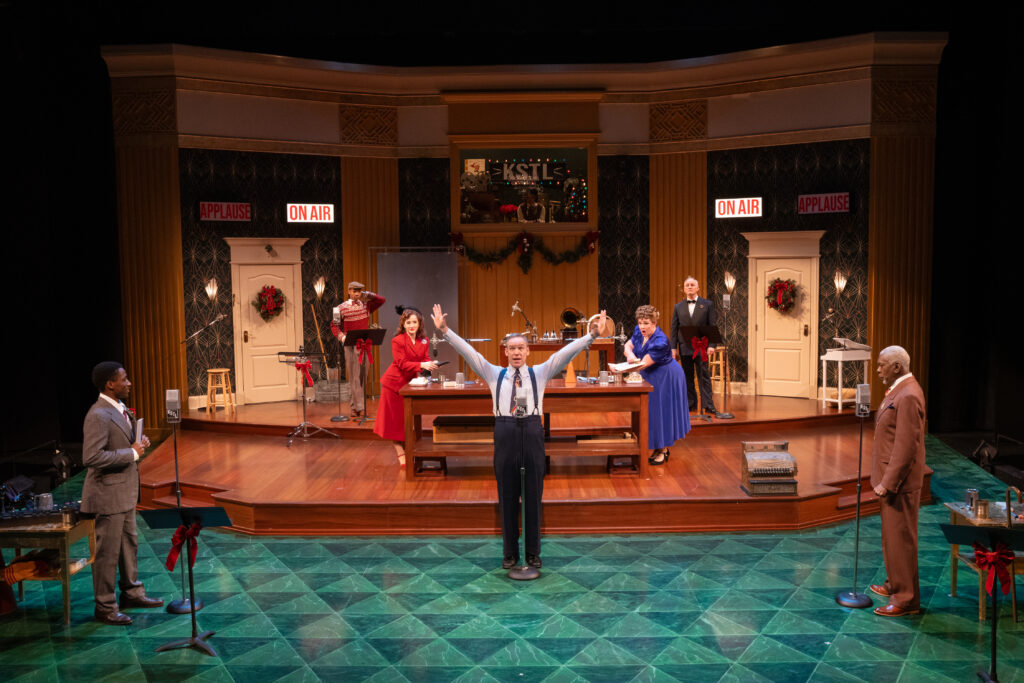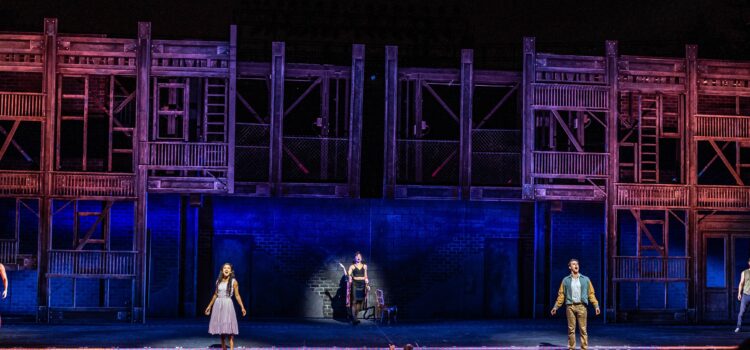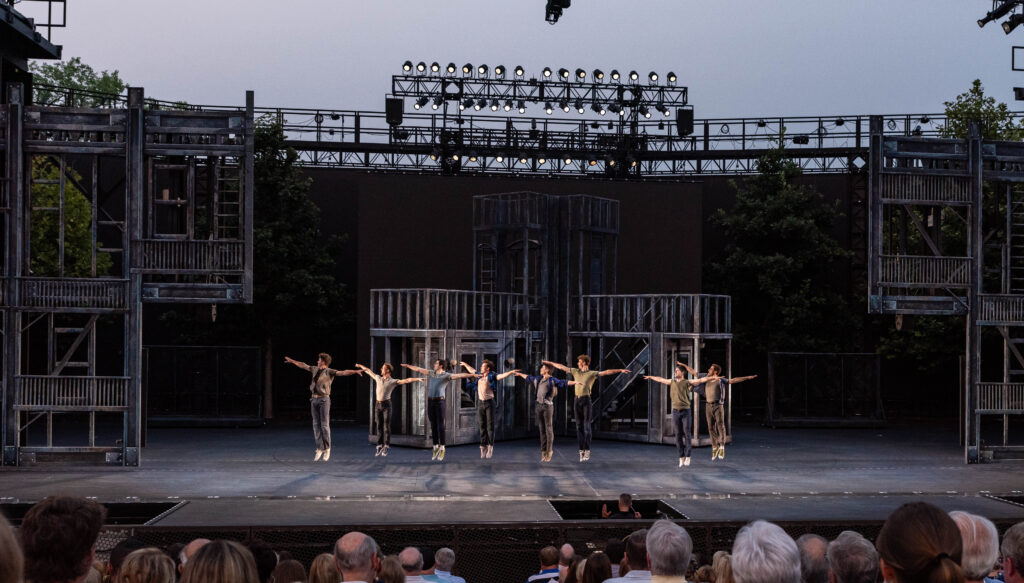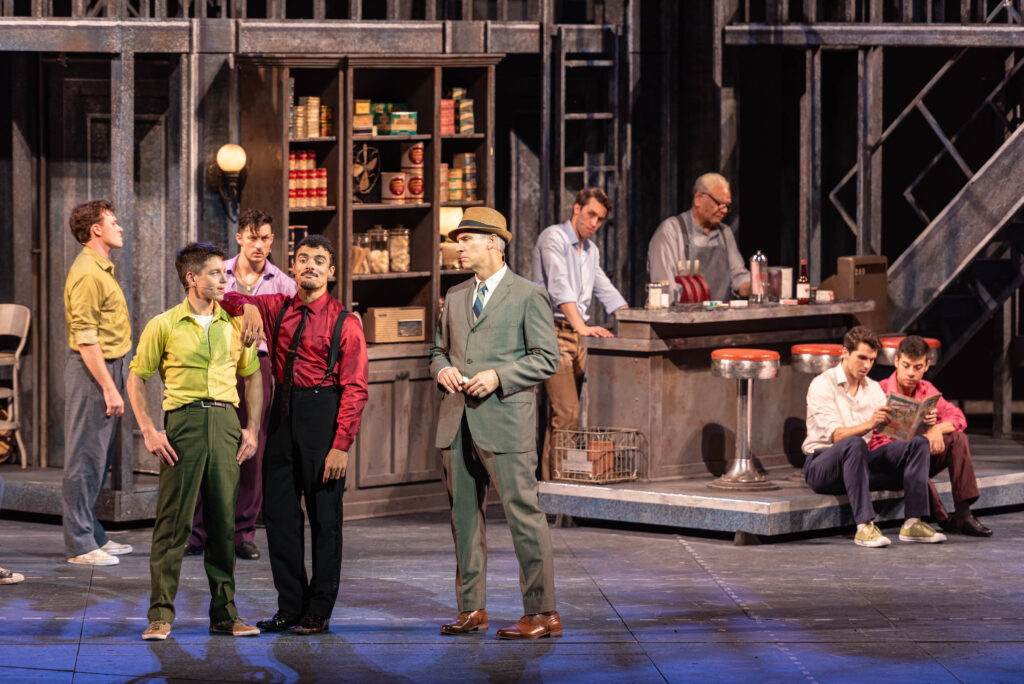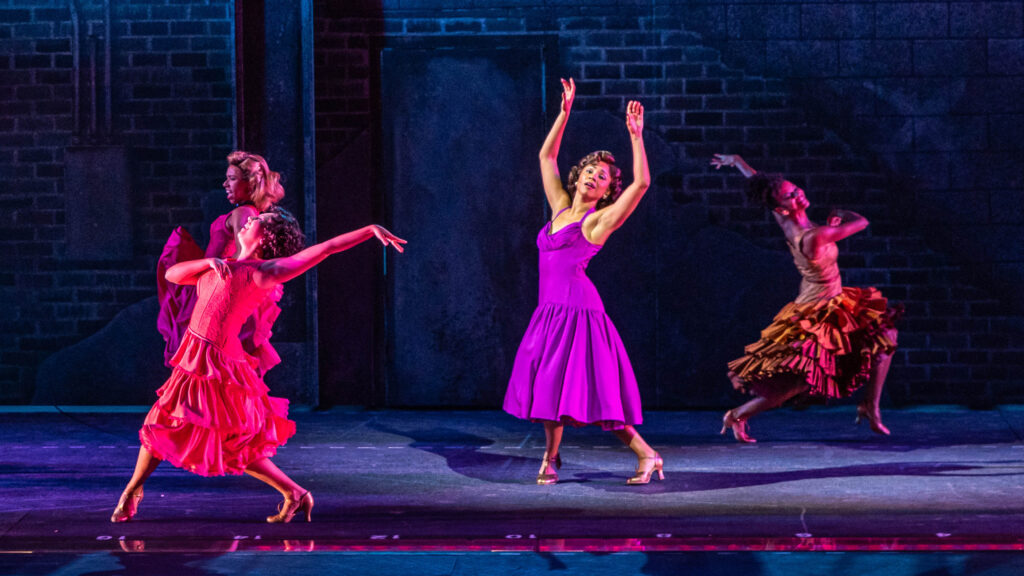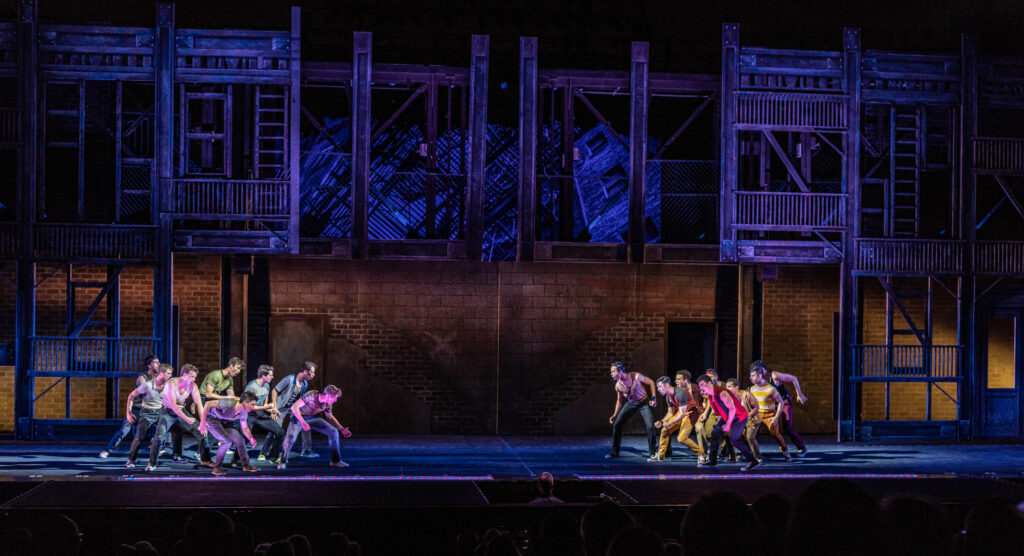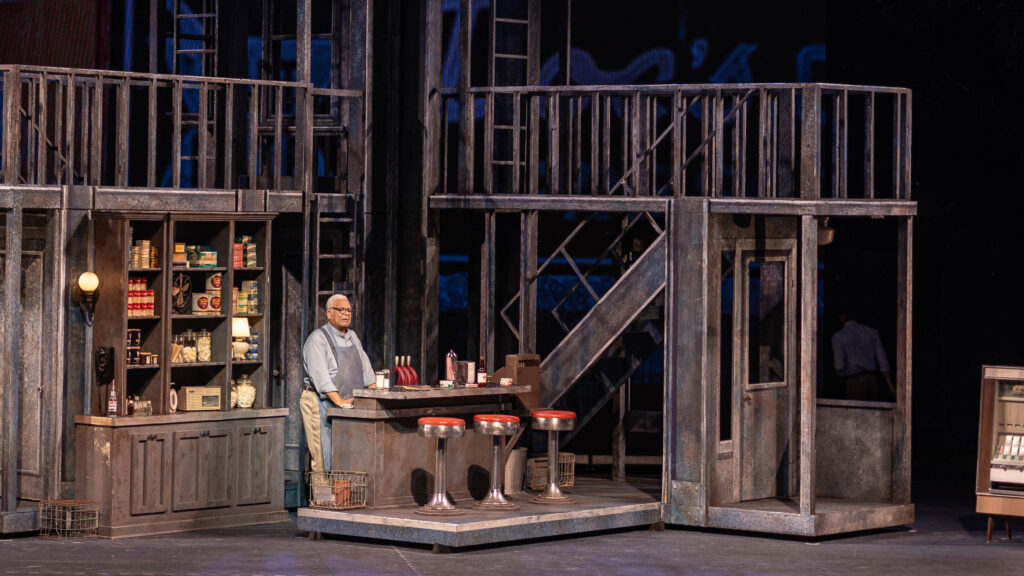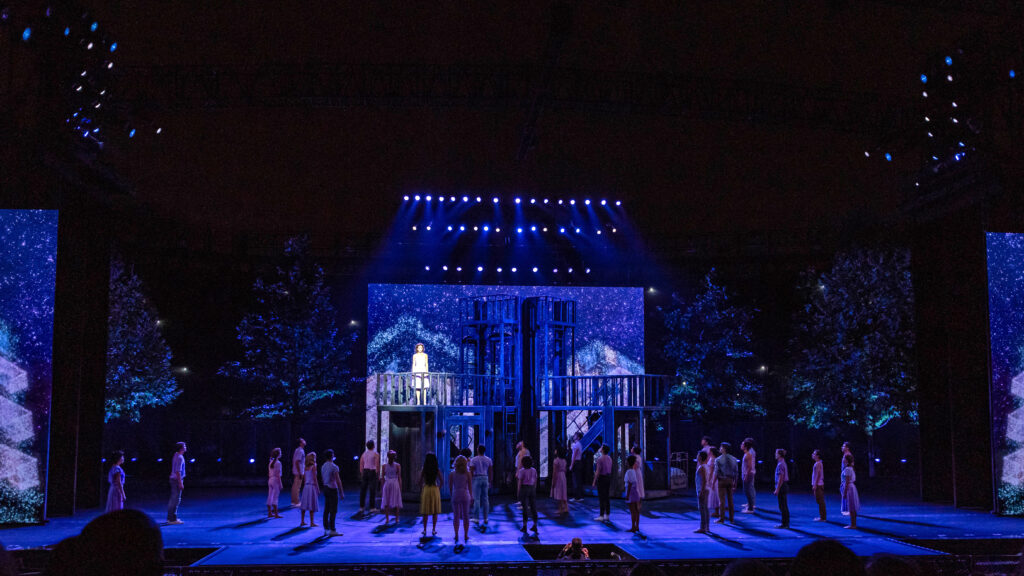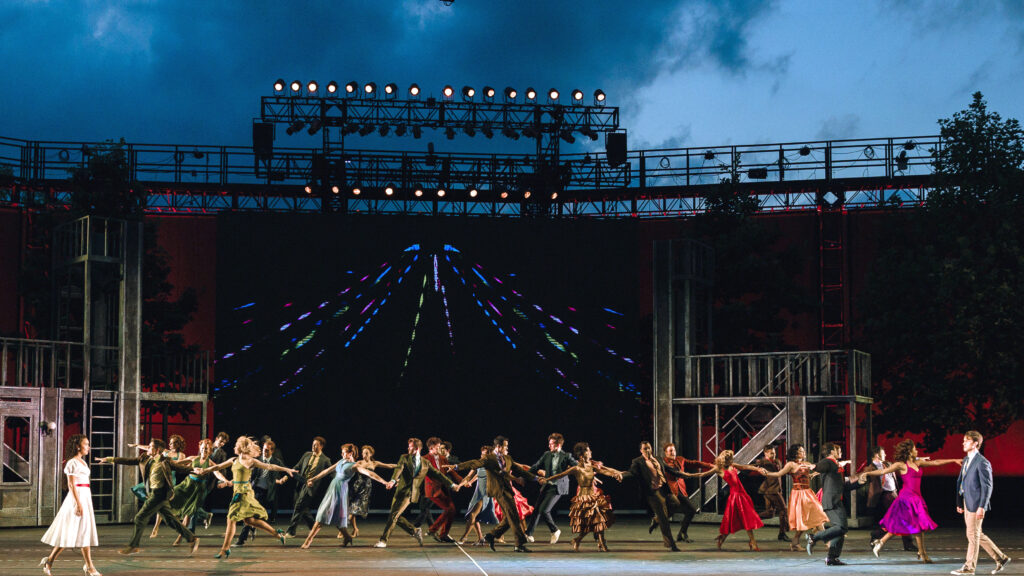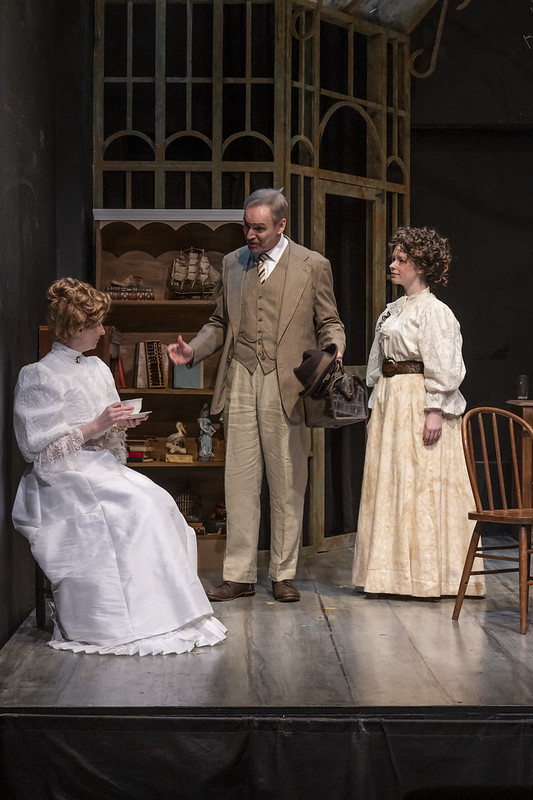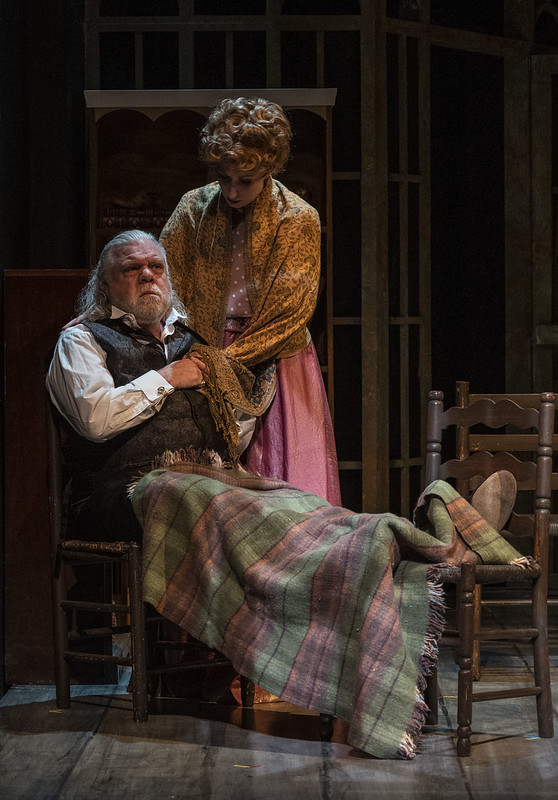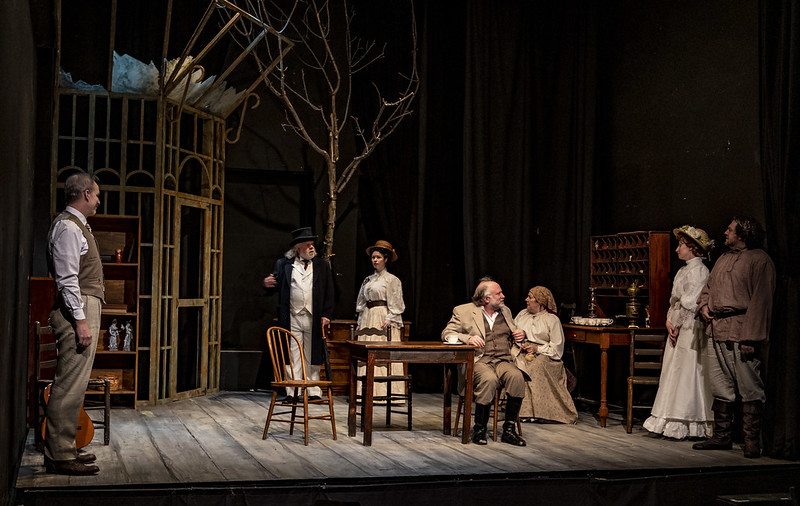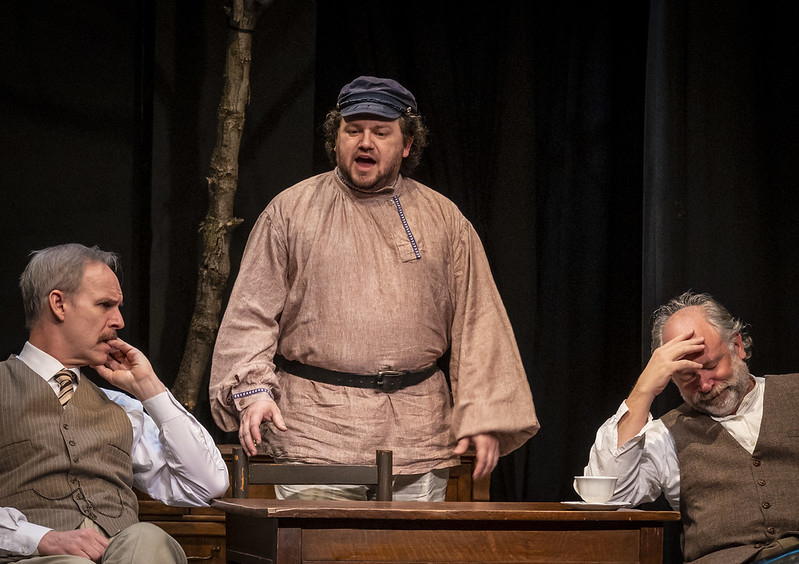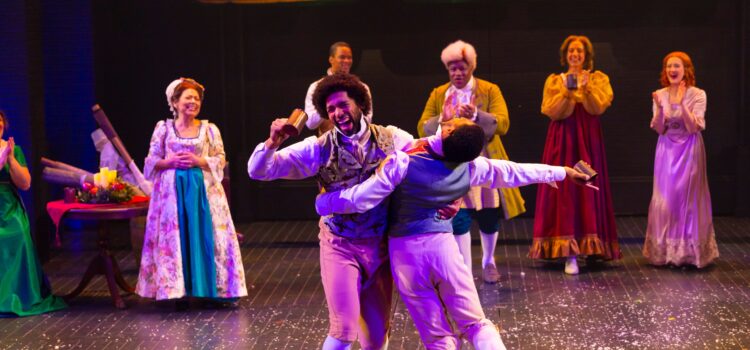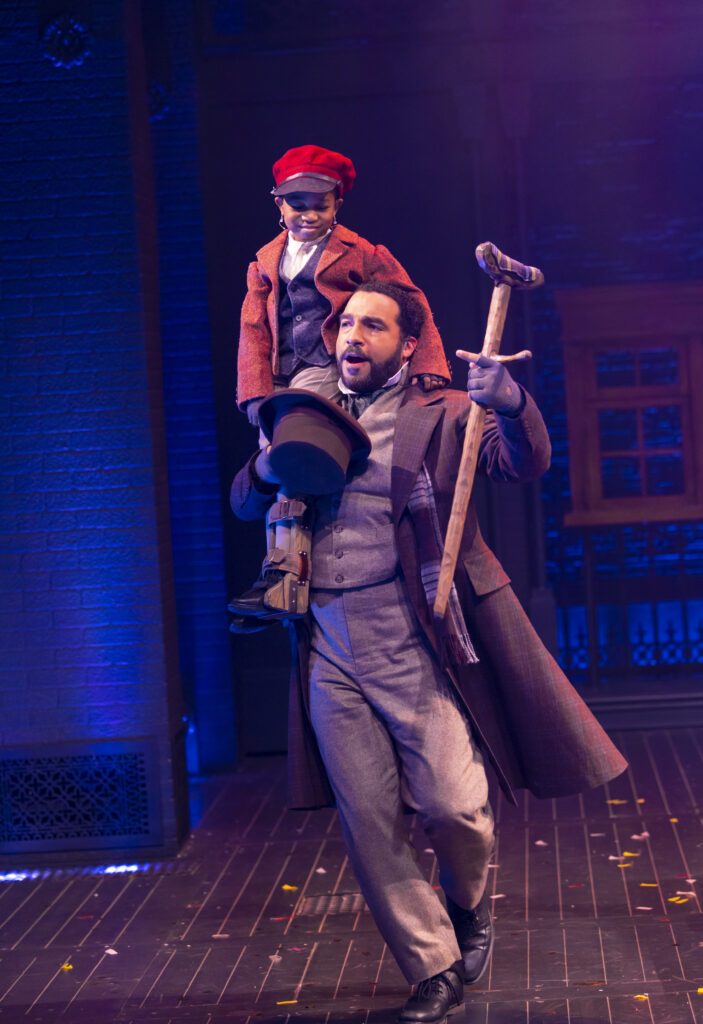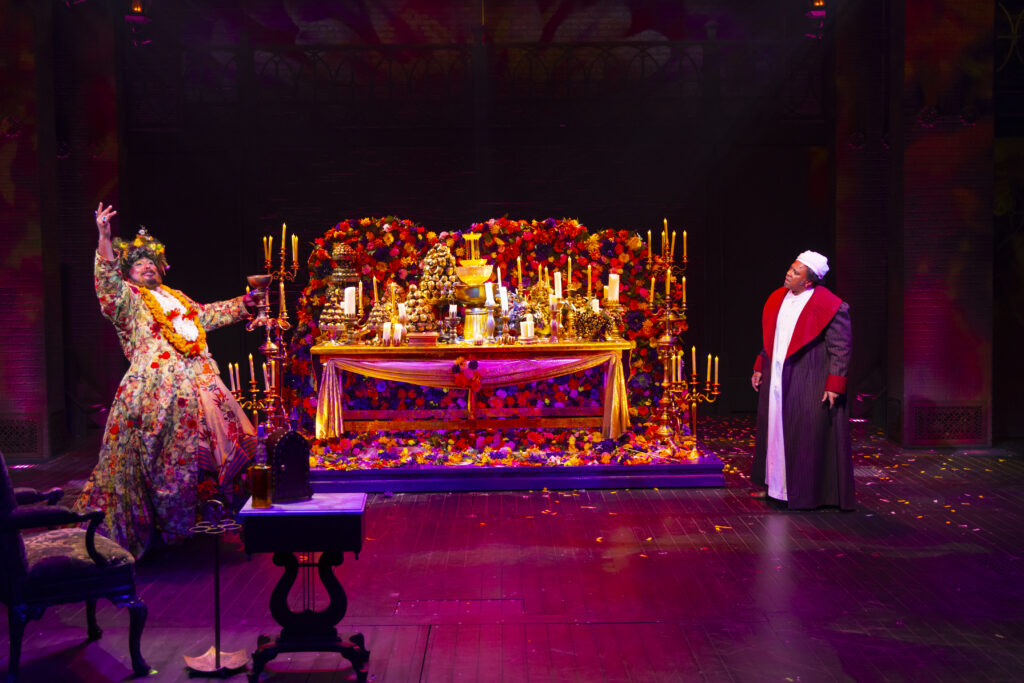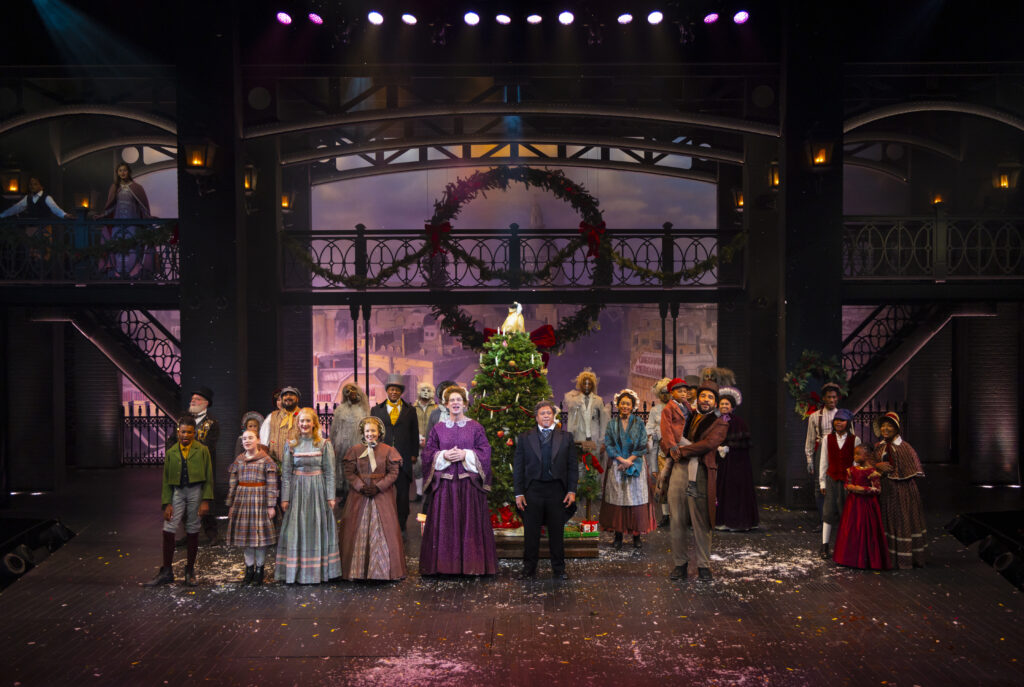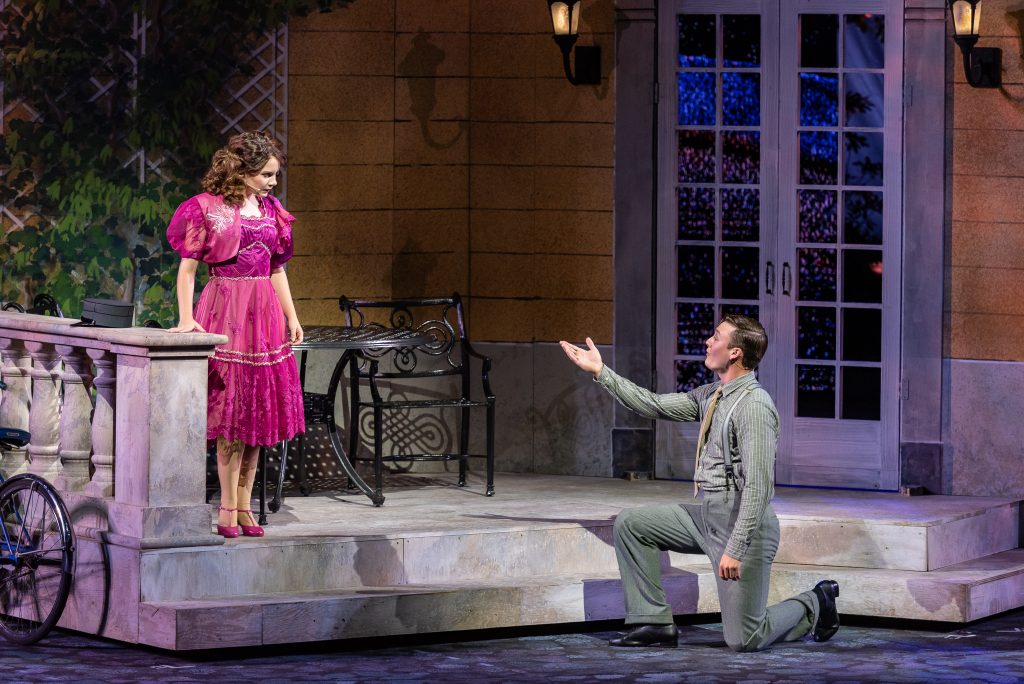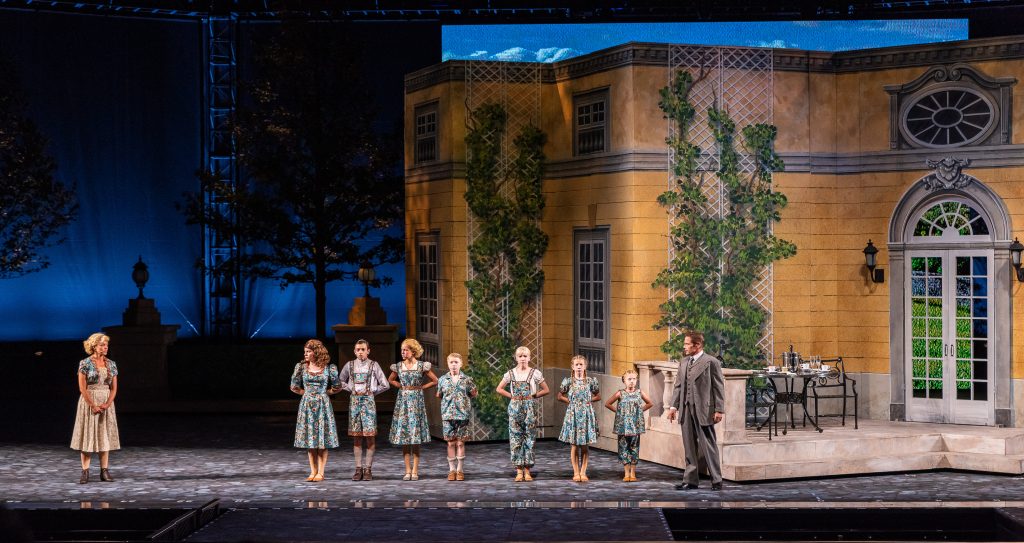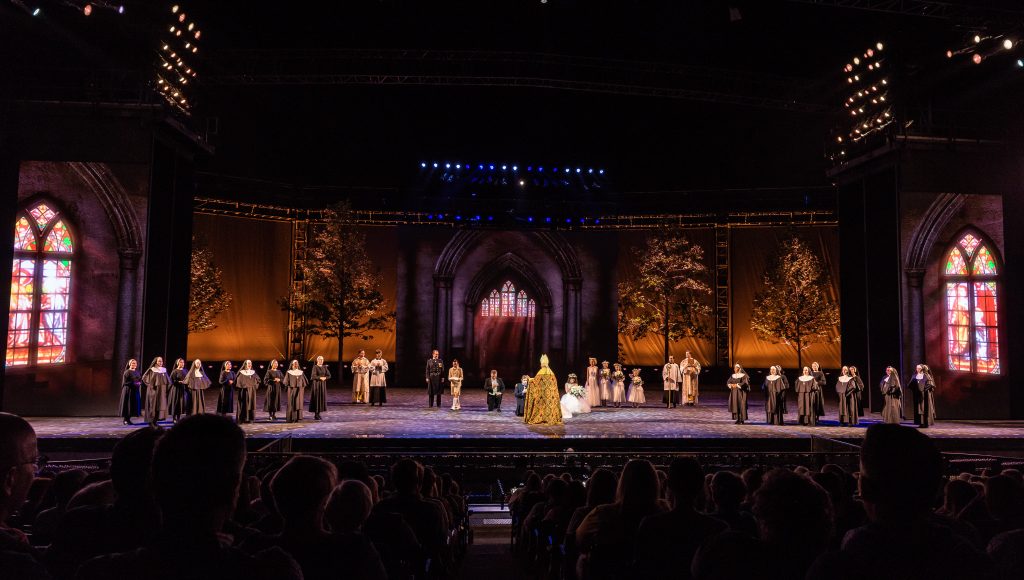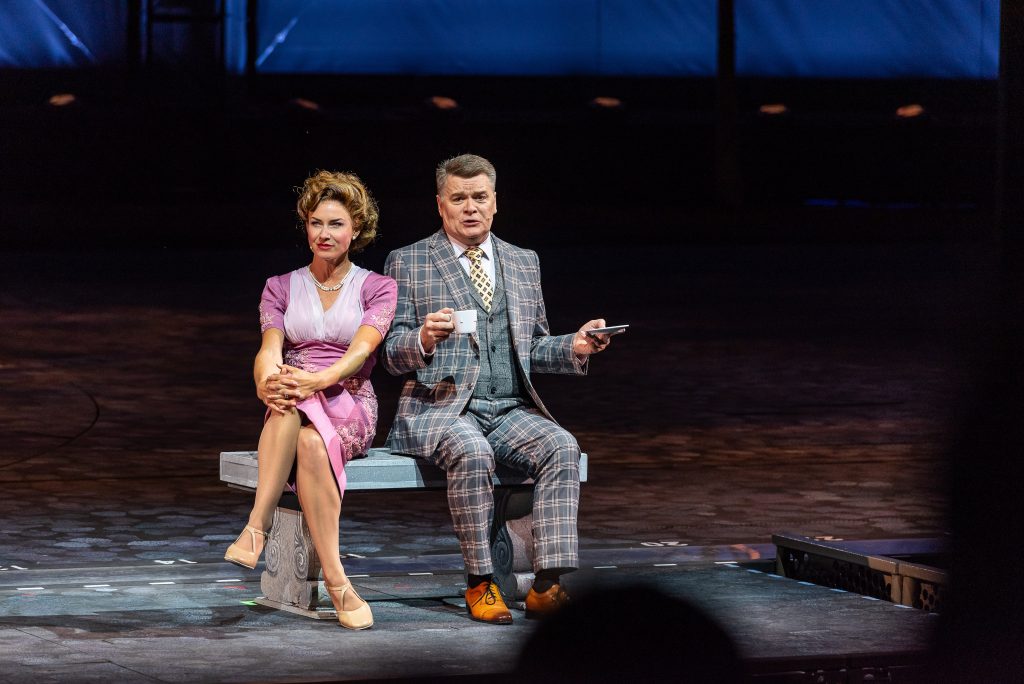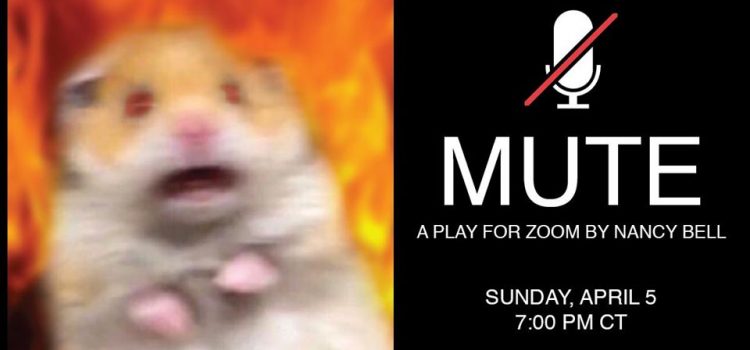By Lynn Venhaus
Bristling with refreshing feminist energy, rom-com vibes, and clever wit, “Emma” bounds onto The Repertory Theatre of St. Louis’ well-appointed mainstage with verve.
Stuffiness, be gone! This charming adaptation of Jane Austen’s novel “Emma” by Kate Hamill is redolent with both style and substance. Adept at physical comedy, a spirited ensemble revitalizes this classic 1815 tale of a zealous matchmaker whose meddling complicates matters of the heart for friends and acquaintances.
As the titular character, Adelin Phelps exudes confidence and determination as the young maiden who is convinced that she knows best. On her hard-fought journey of self-discovery, she engages us for the entire two acts, always on stage, and breaks the fourth wall with glee. She has a thing or two to say about love.
Hamill’s pared-down, smaller cast version remains an interesting look at Austen’s societal themes – those on class and gender opportunities, but her reimagining feels modern and relatable.
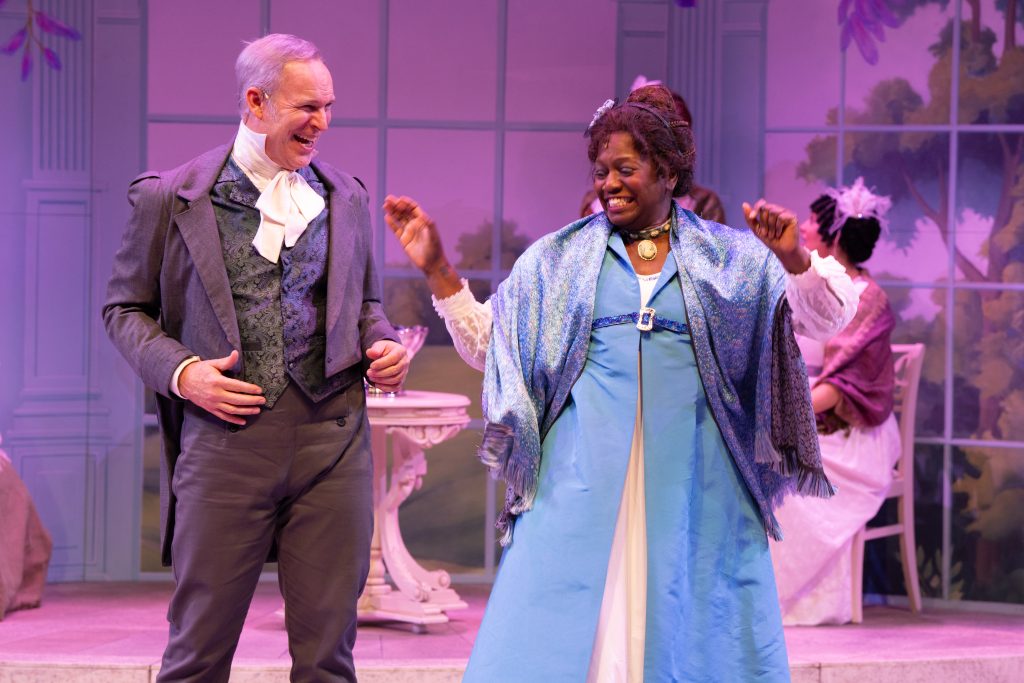
First presented in 2022 at the Guthrie Theatre in Minneapolis, she polished it with delightful humor, poking fun at people’s foibles. But she doesn’t lose sight of a smart woman’s predicament at a time when ladies didn’t have rights.
The Rep’s casting is impeccable, and its seasonal timing. The world is celebrating Jane Austen’s 250th birthday this month, so a dip back into the world of Highbury is well-suited for a holiday show.
The guests look merry and bright for the parties, with sprightly choreography from Sam Gaitsch, and director Tracy Brigden ensures they not only move briskly, but each carve out a distinct character.
As Emma’s protégé Harriet Smith, Liz Lewe steals the show as the sweet-natured boarding school student who becomes Emma’s primary project, because she is convinced Harriet needs a higher social standing.
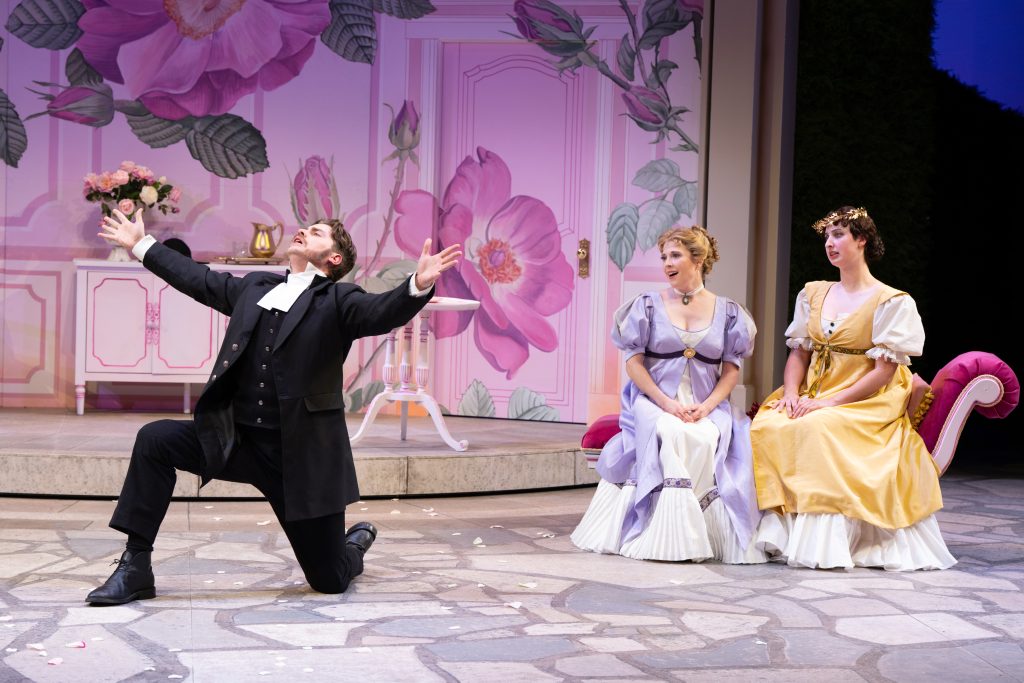
Lewe’s flair for comedy, their crisp timing and pleasant demeanor endears. It’s a breakout role for Lewe, a local theatre professional who is also an accomplished writer and director. Casting Director Delaney Piggins’ keen eye was serendipitous, for when Lewe, as a reader during auditions, stood out, it was clear they were a perfect fit.
The ease at which the ensemble embraces their roles is noteworthy – in their formal 19th century manners and speech, and fluid entrances. The skillful dialect work by coach Joanna Battles helps define the time and place.
Costume designer Dottie Marshall Englis’ dandy Regency finery works for all seasons, her ingenious layering that captures the era and economic status perfectly. Dennis Milam Bensie’s wig designs are terrific, too. The springtime berry-picking scene bursts with color and frolic.
With his exceptional dialogue delivery, Louis Reyes McWilliams is dashing once more as George Knightley, after his zesty swashbuckling turn as the mischievous hero in The Rep’s “Sherwood: The Adventures of Robin Hood” last spring.
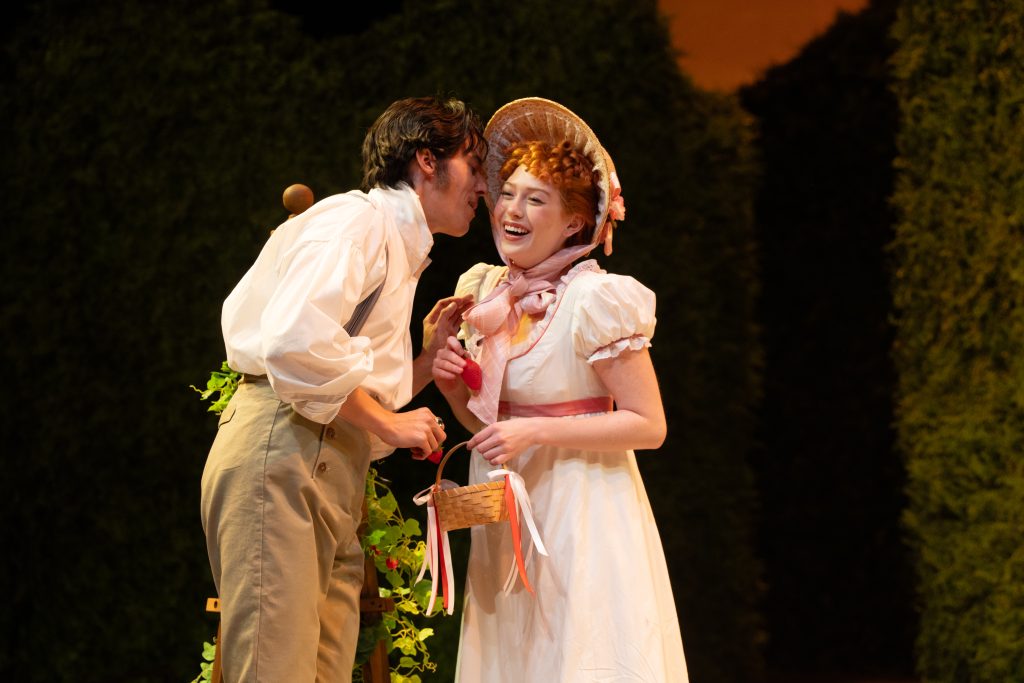
He’s well-suited to embody Emma’s close friend who challenges her and often argues about what he perceives as her flightiness and immaturity. He and Phelps are a dynamic duo, and you root for them.
Before they can figure out their course, we learn about other men in town. Jack Dryden, hilariously over-the-top as the buffoonish Clark in “The Cottage,” is back again as another goofball – Mr. Eldon, who is smitten with a woman not named Harriet.
Ryan Omar Stack suavely portrays Frank Churchill, a prized suitor who is fond of Jane Fairfax, but not if Emma can interfere. His arrival causes some upheaval and a few hearts to flutter. Yet, his intentions suspect, for he has not been entirely forthcoming with information, and there are some questions about his inheritance.
Michael James Reed again demonstrates his versatility as a character actor by portraying two – Emma’s daffy health-conscious father Mr. Woodhouse, who is obsessed with the benefits of gruel, and the good-natured widower Mr. Weston, who remarries at the start (and Emma had something to do with it).
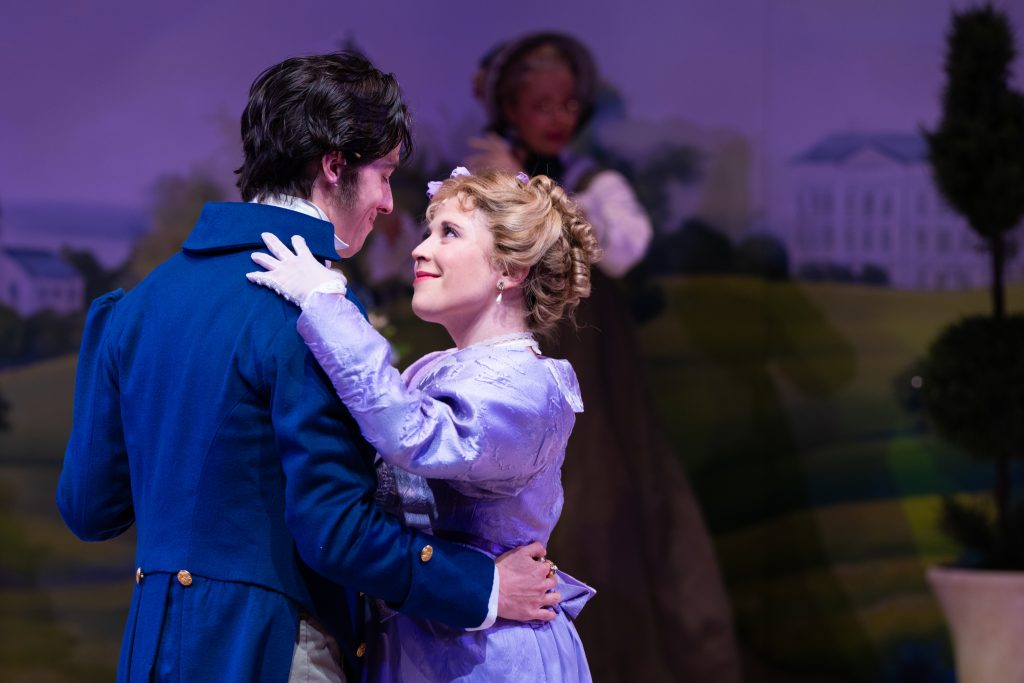
Kathryn Bentley delivers a feisty performance as his happy bride, Mrs. Weston, and the ever-reliable Nancy Bell is the genteel but talkative school headmistress Miss Bates. Maggie Newstead-Adams is pert as the popular and pretty Jane.
Taking on a dual role as Elton’s ill-mannered wife Augusta is live wire Olivia Balicki, who must giggle – and snort – as the frisky Augusta, then switches gears as the infirmed Mrs. Bates in a wheelchair.
Janeites looking for strict historical accuracy may be surprised but could be won over by the production’s effervescence. Margery and Peter Spack’s captivating set design, with a focus on florals, is enhanced by Jason Lynch’s lighting design.
John Gramada’s compositions are a festive element, and his sound design superb.
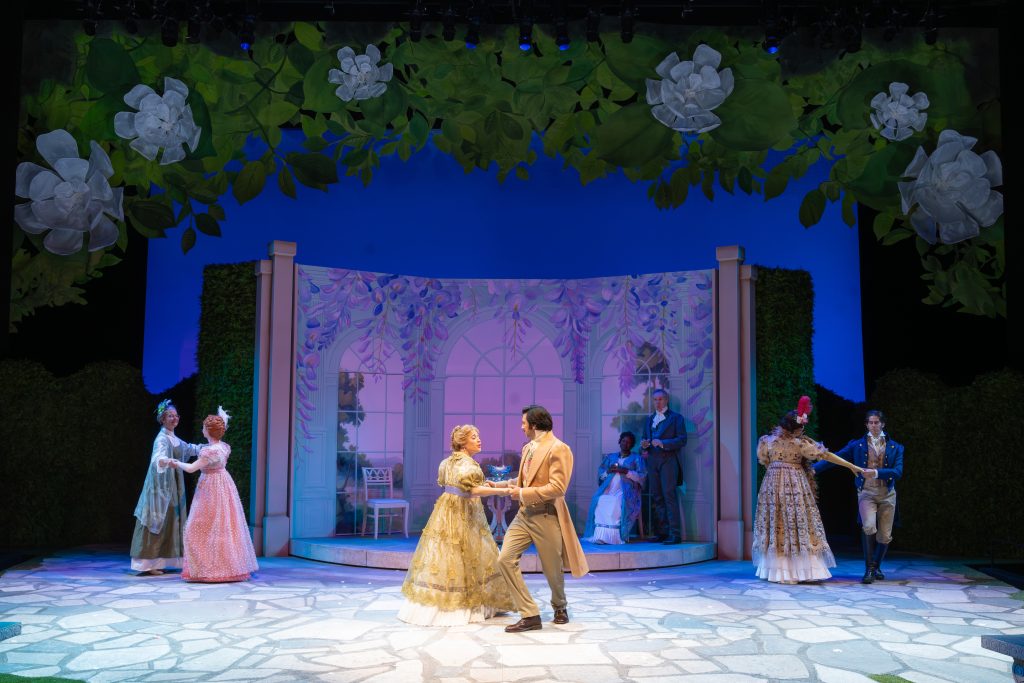
The excellence of Brigden’s seamless work doesn’t lose sight of the present while creating an ode to the past, making it resonate in several ways, and Brian Coats’ dramaturg reflects that too.
Austen’s work has been celebrated at The Rep notable times – including “Pride and Prejudice” in 2019, “Miss Bennet: Christmas at Pemberley” in 2017 and “Sense and Sensibility” in 2013, and this may be the best one yet.
“Emma” was Austen’s fourth published novel, and it has been adapted into four films (if you count “Clueless” in 1995), the most recent in 2020 starring Anya Taylor-Joy.
This version is a fitting salute to her legacy, and a wonderful showcase for outstanding talent. Don’t miss this joyous collaboration, preferably with a side of biscuits.

The Repertory Theatre of St. Louis presents “Emma” Dec. 3-21 at the Loretto-Hilton Center, 130 Edgar Road. For more information, visit www.repstl.org
Post-show discussions follow the Dec. 14 and 17 performances at 2 p.m.
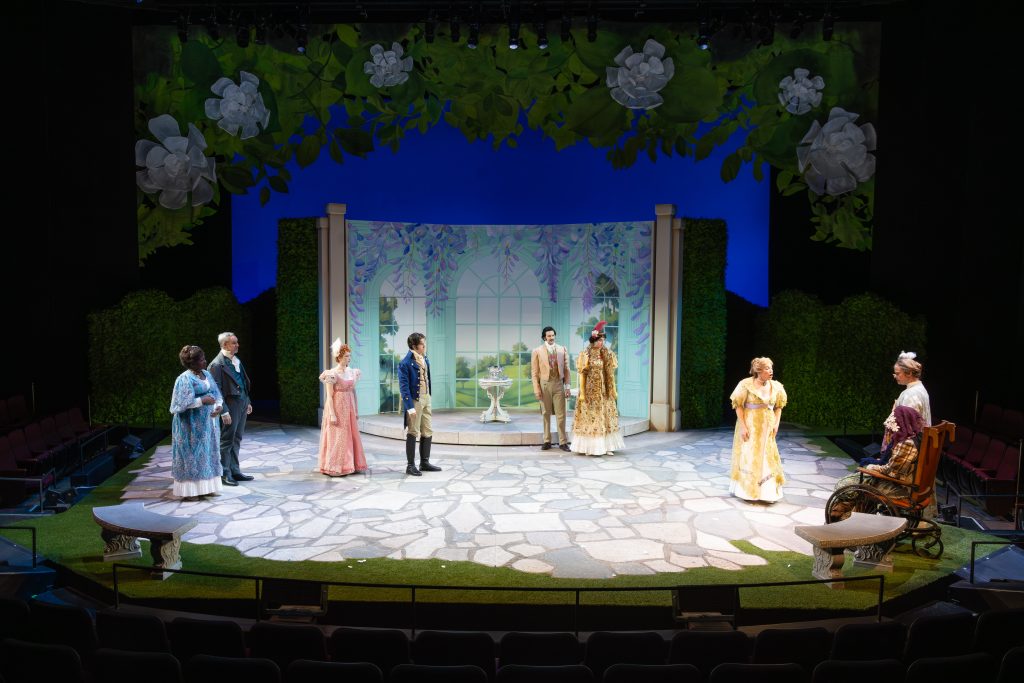

Lynn (Zipfel) Venhaus has had a continuous byline in St. Louis metro region publications since 1978. She writes features and news for Belleville News-Democrat and contributes to St. Louis magazine and other publications.
She is a Rotten Tomatoes-approved film critic, currently reviews films for Webster-Kirkwood Times and KTRS Radio, covers entertainment for PopLifeSTL.com and co-hosts podcast PopLifeSTL.com…Presents.
She is a member of Critics Choice Association, where she serves on the women’s and marketing committees; Alliance of Women Film Journalists; and on the board of the St. Louis Film Critics Association. She is a founding and board member of the St. Louis Theater Circle.
She is retired from teaching journalism/media as an adjunct college instructor.

